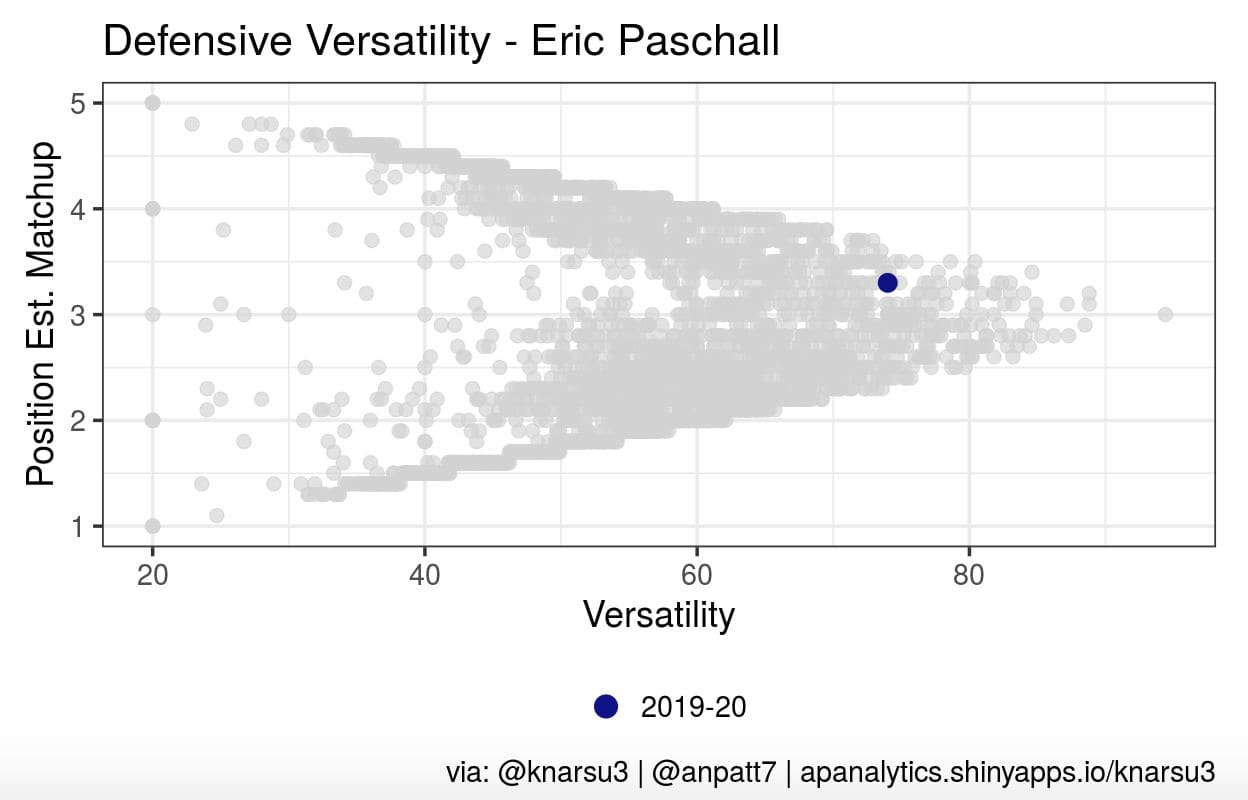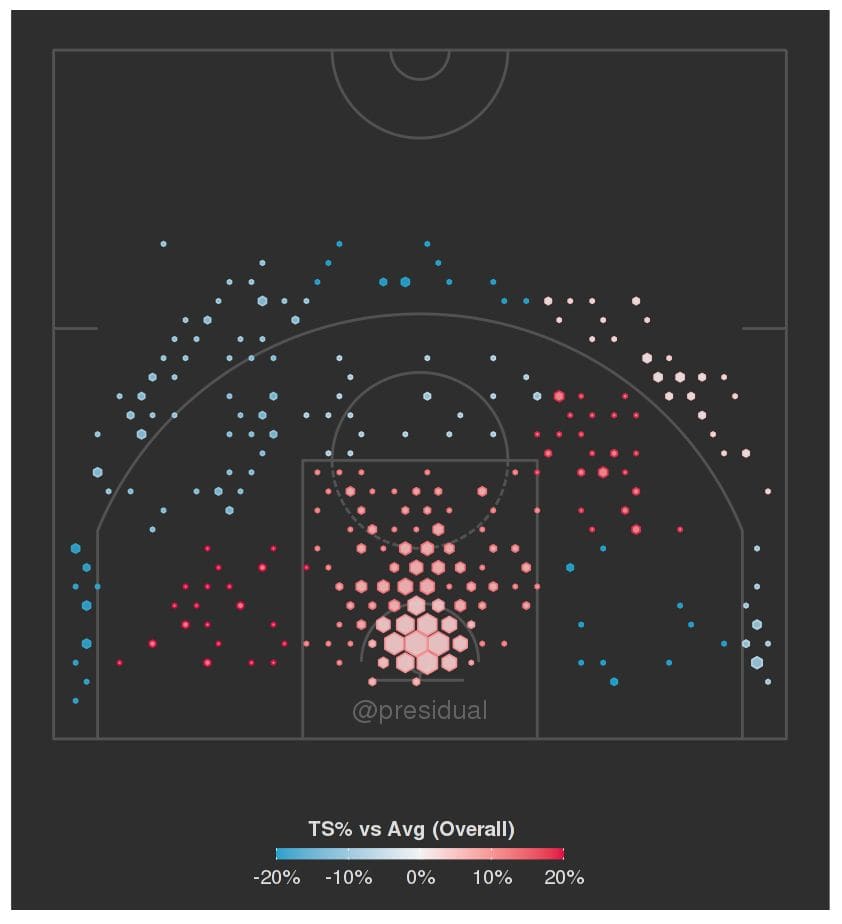Even if the NBA regular season is canceled, we’ve seen enough to start assessing the first season of notable rookies. What did the Golden State Warriors see from Eric Paschall?
When the Golden State Warriors selected Eric Paschall with the No. 41 pick in the 2019 NBA Draft, they certainly didn’t expect that he’d spend his rookie season as the team’s leading scorer and offensive fulcrum. But the departure of Kevin Durant and serious injuries to Stephen Curry, Klay Thompson and Draymond Green left a void for Paschall to step into.
Paschall led the Warriors in minutes played, total points, total field goal attempts and was second in total rebounds, making him the one consistent bright spot for the league’s worst team. Things will be much different for Golden State next season, with Curry, Thompson and Green all healthy, Andrew Wiggins starting his first full season with the team and either a high draft pick or the fruits of a big trade package joining the roster.
How did what we saw from Paschall this season change the perception of his limitations, and what role could he potentially fill for the reloaded Warriors in the future?
What did we expect?
Paschall was a key complementary piece on the dominant Villanova Wildcats, contributing defensive versatility and a bit of floor-spacing from the frontcourt. However, his 3-point percentage was just in the mid-30s from the college line and there were concerns about whether his versatility would translate — was he big enough to handle NBA 4s and quick enough to handle NBA wings?
In The Step Back’s final Big Board, Trevor Magnotti highlighted some growing optimism around Paschall, coming out of his performance at the NBA Draft Combine:
“A big winner from combine weekend, Paschall moves up for me due to measuring at a much more projectible weight and wingspan to play the 4, as he’s a much better fit at that spot than as a tweener type. He’s not the shooter that Cam Johnson is, but he has a good shot to become a useful pick-and-pop big man even if he’s still a bit undersized.”
The big questions then, going into this season, were whether Paschall could hit NBA 3-pointers and who he would defend and how well.
More from Nylon Calculus
What did we get?
Like with everything else, it’s hard to pass judgement on Paschall’s effectiveness because the rest of the roster was so depleted by injury and because the context was so different from how they’ll be playing in the future.
On defense, Paschall’s versatility did manifest. He primarily was matched up with opposing 4s (about 40 percent of his defensive possessions) but he was one of just a handful of players who spent at least 10 percent of their possessions matched up with each of the five traditional positions.
There wasn’t much optimistic evidence of his effectiveness — he ranked 91st among 96 power forwards in ESPN’s Defensive Real Plus-Minus, wasn’t much of a factor on the defensive glass and logged steal and block percentages that were both 1.0. But again, it’s hard to separate that from the chaotic context of the team’s defense and, again, his versatility bodes well for his chances of playing a meaningful role at that end once the team is healthy.

This season gave us much more concrete data about Paschall’s offensive skill-set, but it’s still a challenge to make sense of it all. He shot under 30 percent on 3-pointers, a core skill for him to function on the floor with this team in the future. On one hand, you can say he’ll probably see much cleaner looks playing next to Curry and Thompson. On the other, almost all of Paschall’s 3-point attempts this season were catch-and-shoot and about 88 percent were classified as either open or wide-open (no defender within four feet). Looking at those numbers, it doesn’t seem like there is a huge change coming in his shot profile.
However, there are other ways to creative gravity and affect offensive spacing. Paschall was adept at cutting off the ball, finding seams in the defense and pockets of space inside the arc, and looked solid running the floor in transition. He was also an impressive finisher, leaning on everything in his toolbox — functional strength, wingspan, vertical explosion and soft touch. With his propensity for drawing contact and trips to the free-throw line, his true shooting chart (which includes shooting percentages and fouls drawn by location) looks very good inside the arc.

Thinking about Paschall’s role beyond just feasting on opportunities created by Golden State’s shooters, he showed some things this season that might be useful as a second-unit fulcrum down the road.
Nearly a quarter of his possessions were used in either isolations or post-ups, a relatively stagnant option for a Warriors offense that will, presumably be trending back towards dynamism with Curry and Thompson healthy and Durant gone. (He finished three times as many possessions in isolation as he did as the roll man in the pick-and-roll, more evidence of just how wonky the injuries made everything). But Paschall was actually incredibly effective in both settings — ranking in the 86th percentile in scoring efficiency on post-ups and the 72nd on isolations.
Paschall was very assertive when touching the ball inside the arc, quickly assessing the defense in front of him and attacking mismatches, whether it was bodying a smaller player or quickly taking a bigger one off the dribble.
He’s quick enough to get a half-step on most defenders and he’s so big and strong that he can create space at the rim or finish through contact. When driving to the basket, he was almost exclusively looking to score (he had the ninth-lowest pass percentage of the 97 players who had at least 300 drives this season), but he’s a willing passer and can make the easy read when the defense collapses.
Paschall is not going to lead the Warriors in field goal attempts again next season, but there are the outlines of a versatile player who could have a lot of utility in different roles. He will probably need a defensive assignment similar to Draymond Green but the two can play together against certain matchups as well, and he should be more impactful at that end with better defenders around him. On offense, it would be really, really helpful if he could nudge that 3-point percentage up, even into the low 30s. But even if he can’t, there are ways he can work effectively as an off-ball threat and mismatch-buster, it just might take a bit more creativity.